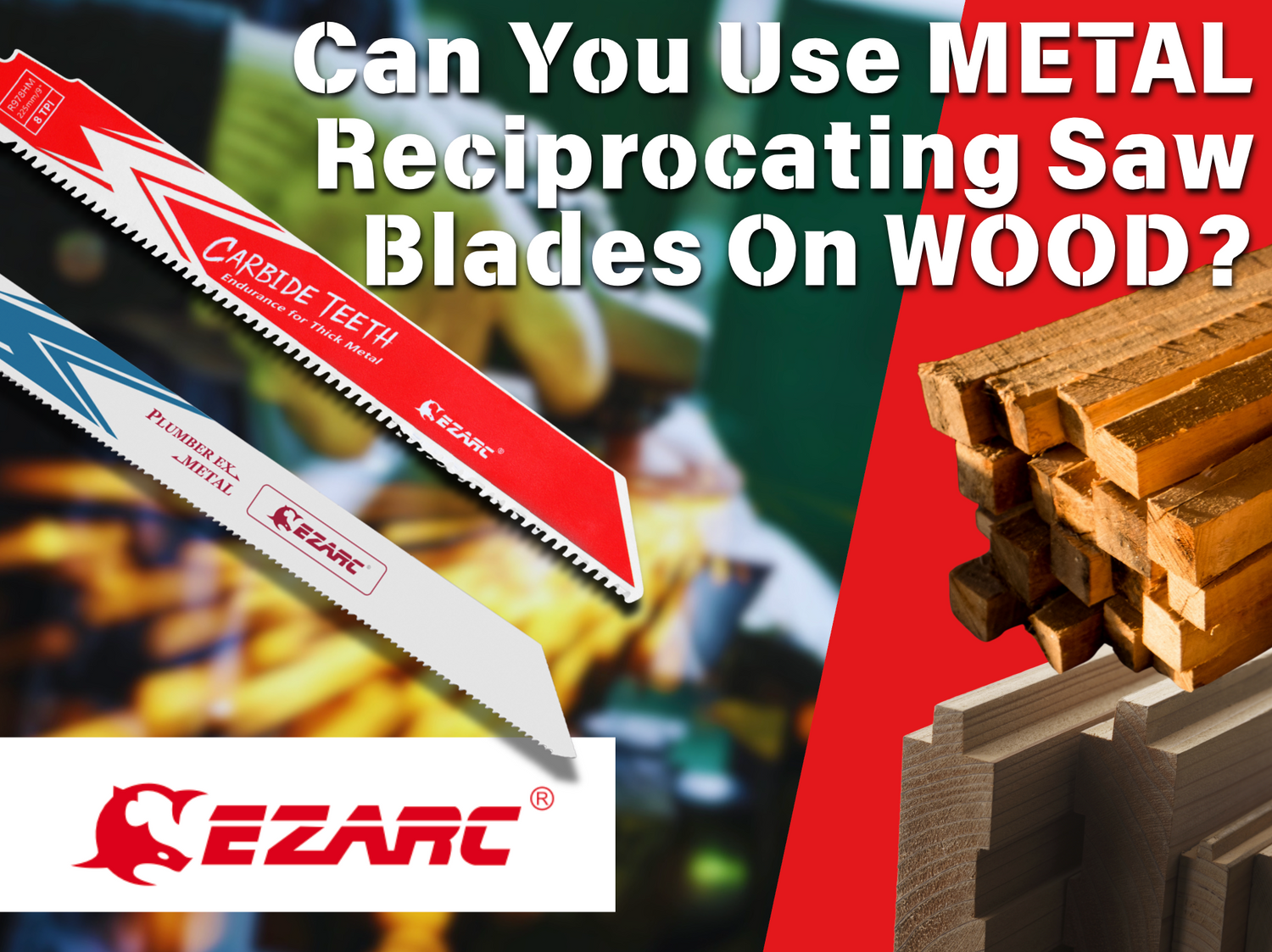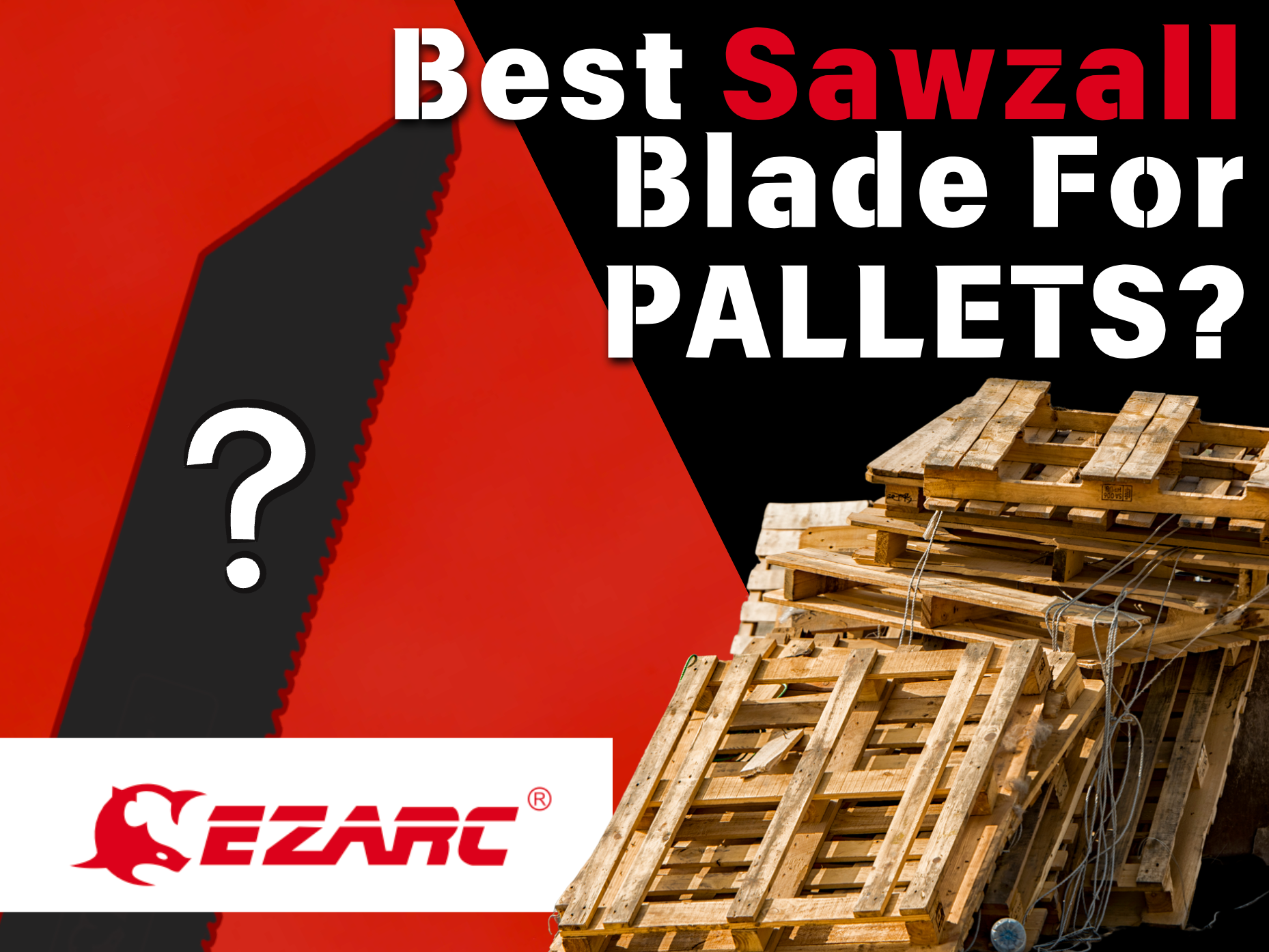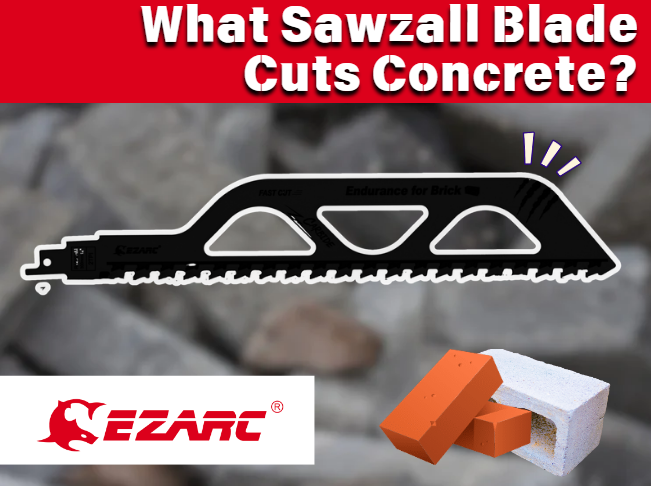When it comes to reciprocating saws, one of the most common questions DIYers and professionals ask is: Can you use metal reciprocating saw blades on wood?

With so many types of blades available—designed for metal, wood, pallets, or even multi-material use, it’s easy to get confused. In this guide, we’ll explain how different blades perform, what happens if you use a metal blade on wood, and highlight some tips for choosing the best reciprocating saw blades for wood without compromising efficiency.
- 1. Understanding Blade Types
- 2. Can You Use Metal Reciprocating Saw Blades on Wood?
- 3. Key Considerations
- 4. When It Makes Sense to Use a Metal Blade on Wood
- 5. Recommended Blade Options
- 6. Metal Blades vs Wood Blades for Pallets
- 7. Tips for Using Metal Blades on Wood
- 8. Other Uses for Metal Reciprocating Saw Blades
- 9. Final Thoughts
Understanding Blade Types
Before answering the question directly, it’s important to understand the main types of reciprocating saw blades:
Metal Blades
High reciprocating saw TPI blades cut slower in wood but excel in metal. According to this study on reciprocating sawing performance, carbide teeth last longer on hard materials like steel.
- Typically bi-metal or carbide-tipped.
- High TPI (14–24) for cutting metals like steel, rebar, or nails.
- Designed to withstand hard materials and prevent tooth breakage.
- Designed to withstand heat.
Wood Blades
- Lower TPI (6–10) for fast, aggressive cuts.
- Often made of high carbon steel (HCS).
- Some are reinforced for wood pallet saw use and can handle occasional nails.
Multi-Material Blades
- TPI 10–14, designed to handle wood, metal, and plastic.
- Flexible and versatile for demolition projects.
Can You Use Metal Reciprocating Saw Blades on Wood?
The short answer: Yes, but with caveats.
Metal blades can cut wood because they are sharp and durable, but they are not optimized for wood cutting. Here’s what to expect:
Pros:
- Can handle nails or embedded metal in wood, such as reclaimed wood or pallets.
- Long-lasting due to harder steel and reinforced teeth.
Cons:
- Slower cutting speed compared to a wood-specific blade.
- Leaves rougher edges.
- Overkill for softwood or small projects.
So if you’re using a wood pallet saw or breaking down old crates with hidden nails, a metal blade—like those from EZARC—can be a lifesaver. But for general wood cutting, a dedicated wood blade is more efficient.

Key Considerations
1. Blade TPI
- Metal blades have higher TPI, which can slow wood cutting.
- Lower TPI wood blades (6–10) allow faster material removal.
2. Material Thickness
- Metal blades excel in thin to medium wood with nails.
- For thick hardwood or pallets, choose a wood pallet saw blade or multi-material blade.
3. Blade Life
- Using a metal blade on wood won’t damage the blade.
- However, cutting large amounts of wood can dull teeth faster than intended, reducing performance for metal cutting later.
When It Makes Sense to Use a Metal Blade on Wood

- Reclaimed Wood or Pallets
- Often contain nails, screws, or metal brackets.
- Using a metal blade prevents tooth breakage.
- Multi-Material Projects
- If you’re cutting wood and occasionally hit pipes, nails, or sheet metal.
- Multi-material blades or metal blades handle these surprises better than wood-only blades.
- Demolition Work
- Fast-paced demolition where you don’t want to swap blades frequently.
- Metal blades provide durability for tough conditions.
Recommended Blade Options
- EZARC Bi-Metal Blades – Durable, excellent for pallets, nails, and multi-material work.
- Multi-Material Reciprocating Saw Blades – 10–14 TPI, can handle both wood and metal efficiently.
- Wood-Specific Blades – For projects where speed and clean cuts are more important than durability against nails.
Metal Blades vs Wood Blades for Pallets
If you’re working with pallets, many people wonder: Is a metal blade or a wood pallet saw blade better?
- Metal Blade: Cuts through wood and nails, slower, rougher finish.
- Wood Pallet Blade (bi-metal): Cuts wood faster while still handling embedded nails, smoother edges.
In practice, many pros keep both on hand. For heavy pallet recycling, EZARC’s nail-embedded wood blades or their metal blades are highly recommended.
Tips for Using Metal Blades on Wood
- Go Slow on Thick Wood: High TPI slows down cutting, so moderate speed helps.
- Use a Stable Saw: Prevents bending or chattering of the blade.
- Switch Blades if Needed: For large wood projects without nails, swap to a wood blade for efficiency.
- Safety First: Wear gloves and eye protection—metal blades can create rough splinters in wood.
Other Uses for Metal Reciprocating Saw Blades
- Cutting Metal Pipes or Rebar – The primary intended use.
- Embedded Nails in Wood Pallets – Avoids tooth breakage.
- Thin Sheet Metal or Conduit – High TPI prevents tearing.
Learn which exact blades to use with different materials here!

Final Thoughts
So, can you use metal reciprocating saw blades on wood? Yes, but they are most effective for projects where durability and nail resistance are needed rather than speed or smooth cuts. For typical wood cutting, a dedicated wood blade or multi-material blade is a better choice.
For pallet projects, demolition, or mixed-material tasks, consider keeping EZARC metal or nail-resistant blades on hand. They offer versatility, durability, and performance you can rely on in tough conditions.
By understanding the differences between metal and wood blades, you can make informed choices, extend blade life, and get the best performance from your reciprocating saws—whether you’re cutting wood, metal, or pallets. Come get your reciprocating blades here!


 Oscillating Multi-Tool Blades
Oscillating Multi-Tool Blades
 Reciprocating Saw Blades
Reciprocating Saw Blades
 Cutting & Grinding
Cutting & Grinding
 Hole Saw
Hole Saw
 Drilling
Drilling
 Sanding & Polishing
Sanding & Polishing
 Hand Tools
Hand Tools
 Metal Worker & Fabrication
Metal Worker & Fabrication
 Woodworking & Carpentry
Woodworking & Carpentry
 Electrical & Plumbing
Electrical & Plumbing
 Automotive
Automotive
 Concrete & Masonry
Concrete & Masonry
 Demolition
Demolition
 NEW ARRIVALS
NEW ARRIVALS



댓글 남기기
이 사이트는 hCaptcha에 의해 보호되며, hCaptcha의 개인 정보 보호 정책 과 서비스 약관 이 적용됩니다.